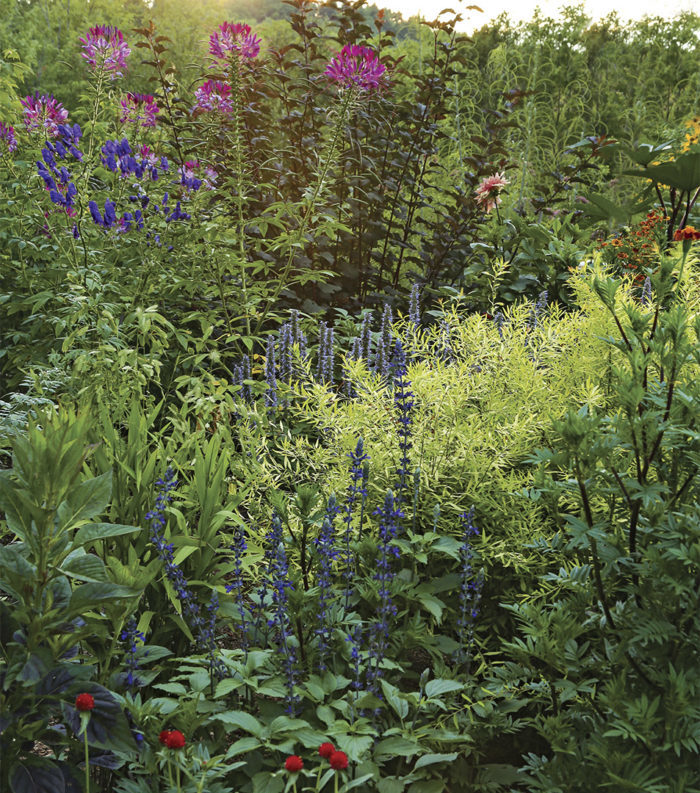
Years ago, I created a long, deep perennial border that I could enjoy and critique from my kitchen window. I was happy with the size and shape of the bed, but the design was a struggle. Frankly, it was boring, filled with small-leaved plants that became drab by midsummer after their blooms peaked and faded.
So I started adding unusual annual and tropical plants to the border, including some with large, interesting foliage. Infusing my plant palette with these unexpected choices provided the contrast I had been looking for and enabled me to keep a continuous balance of colors going throughout the season. Combined with more traditional plantings, the tender plants create a feeling of controlled exuberance.
Annuals provide nonstop color from midsummer right until frost. ‘New Zealand Purple’ castor bean (Ricinus communis ‘New Zealand Purple’, Zones 9–11) adds a bold, dark note, while the cheerful gem tones of gomphrena (Gomphrena haageana ‘Strawberry Fields’, annual), cleome, and ‘Mystic Spires Blue’ salvia (Salvia ‘Balsalmisp’, Zones 7–10) sparkle against the surrounding foliage.
Make room for new textures and colors
There are many annuals that will grow 6 feet or more in a season. The robust silhouettes of these big plants bring weight and balance to my border, anchoring it against a backdrop of forest, sky, and distant hills.
Most of the annuals I plant will provide a riot of flowers and foliage from midsummer until the first frost. Over time, I have redesigned my border to make way for more of these warm-season stars. Ho-hum perennials had to go, and the remaining plants were moved around to leave plenty of room for adding annuals throughout the border. It is an ongoing challenge to maintain sufficient space for them. If I add any new perennials or shrubs to my border, then I must have the discipline to remove plants as well.
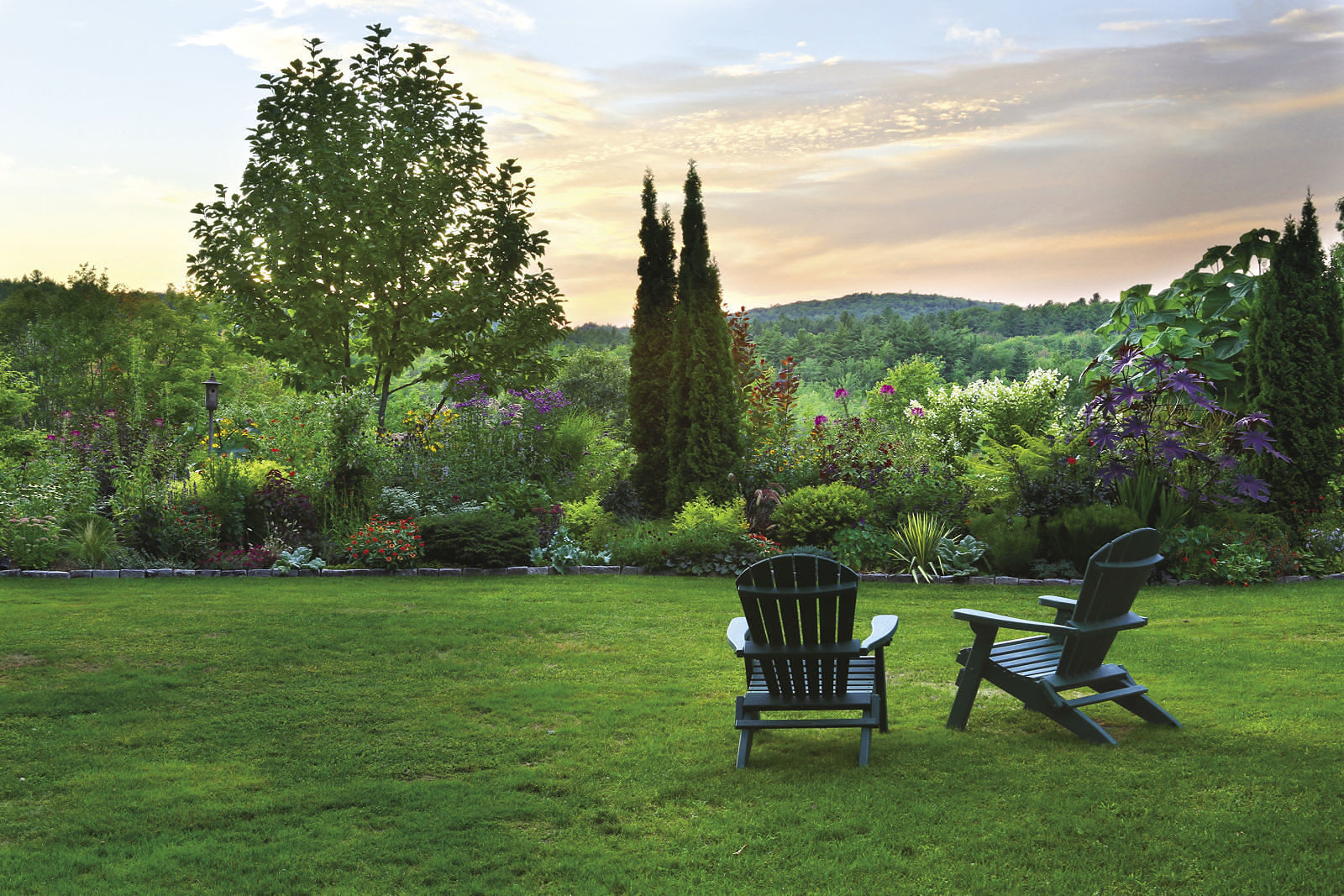
Each spring, I review how the garden looked the previous year and make notes for my upcoming trips to nurseries. I place tall stakes in the empty spaces throughout the border. I stand back and imagine how the annuals will flow with the existing perennials, shrubs, and trees. I note how many annuals I will need in each size: short ones for the front; medium for the middle; and tall for the back.
The bed is flanked by shady woods at each end, so I seek out quiet, short, shade-tolerant annuals for the ends of the border. The big, exotic annuals create a crescendo of color in the middle, the deepest and sunniest part of the border.
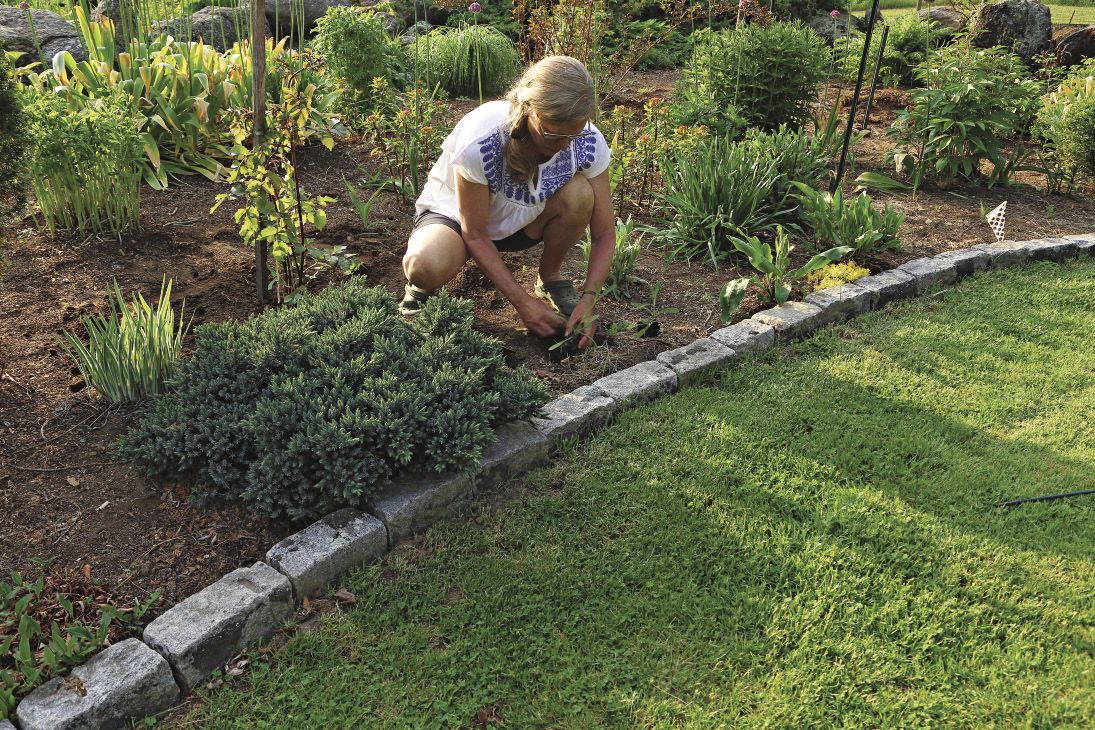
Choosing plants is an annual adventure
For each space that needs to be filled, I have a mental image of the neighboring plants: the size and color of foliage; plant height; and blossom colors. I love going to nurseries that specialize in unusual annuals and poking around for new and interesting varieties to try.
Some nurseries specialize in big, woody annuals that have been overwintered in greenhouses. These can be pricey, but I like to get a few because they provide instant “pow.” I also make sure to include some early-blooming annuals to fuel that first burst of summer color.
Before planting, I lay all of the annuals out on the lawn near their intended spots in the garden. For a more natural look, I mass some varieties and intentionally plant a few tall specimens toward the front of the border to look like they came up on their own. I sometimes plant leggier annuals near sturdy perennials or shrubs to avoid staking.
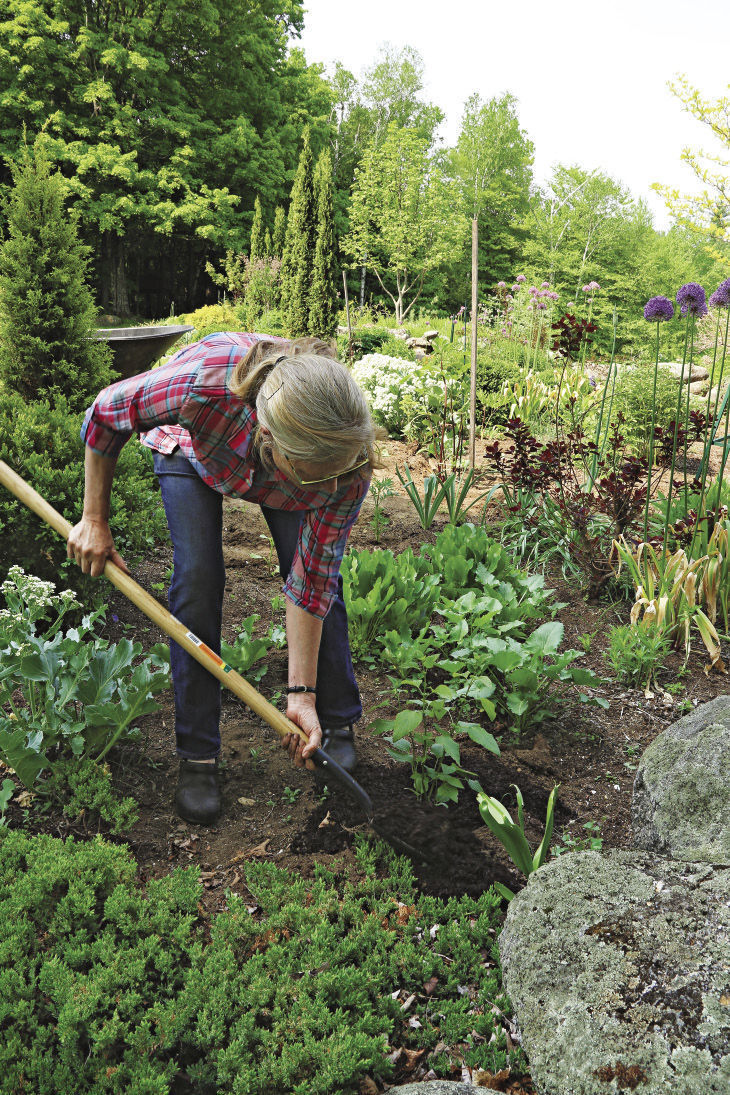
Proper care fuels an exuberant display
Planting only takes a day or two, then the work of caring for the newcomers begins. I water and fertilize judiciously for the rest of the summer. I pinch the annuals back in midsummer to force them to bush out, and I deadhead regularly to encourage rebloom.
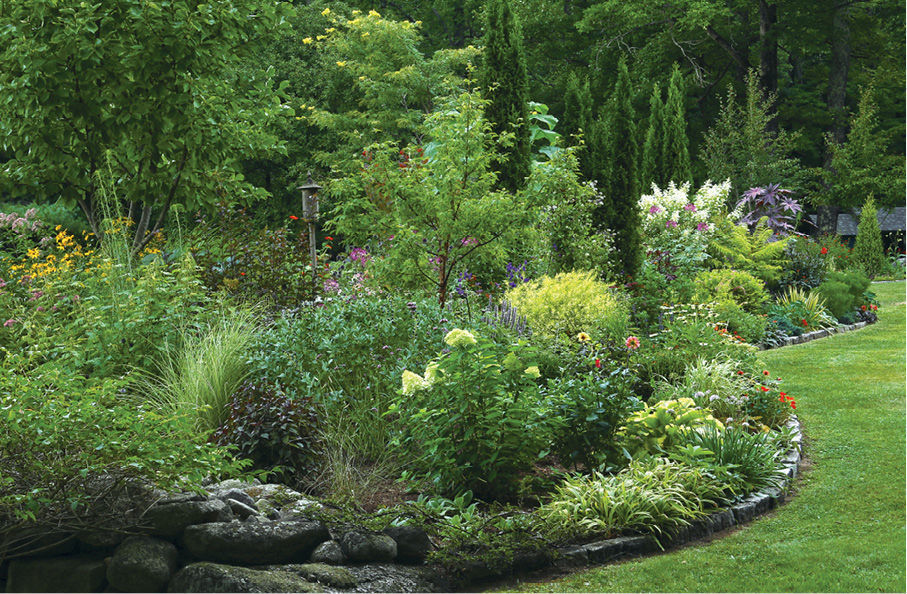
The early-summer border can look a bit funny, with tiny seedlings in big, empty spaces. One way to fill the spaces temporarily is to grow self-seeding poppies (Papaver spp. and cvs., Zones 4–9) and ornamental onions (Allium spp. and cvs., Zones 3–9). Once the annuals start to fill in, I can pull out poppies and cut back allium foliage to make more room. Another trick is to place potted tropicals in the spaces with the young annuals. I have several early-blooming perennials and shrubs to give color in early summer.

As the summer progresses, I am not afraid to cut back or remove the early-blooming perennials to make room for annuals to take the stage. I will even move full-grown annuals to better spots if necessary. Most times they survive if given lots of water.
As I look out my kitchen window throughout the summer, I am constantly assessing the border. I move existing plants and add new ones, adjusting the colors, balance, and weight to get the display just right. I can’t wait to go out every morning to see what’s new. It is so much fun to see plants from places like Brazil and Africa growing happily in my New Hampshire border. Annuals keep the drama unfolding with each passing day.
Mix it up
This design relies on a balance of both tender and hardy plants. Here are a few favorites.
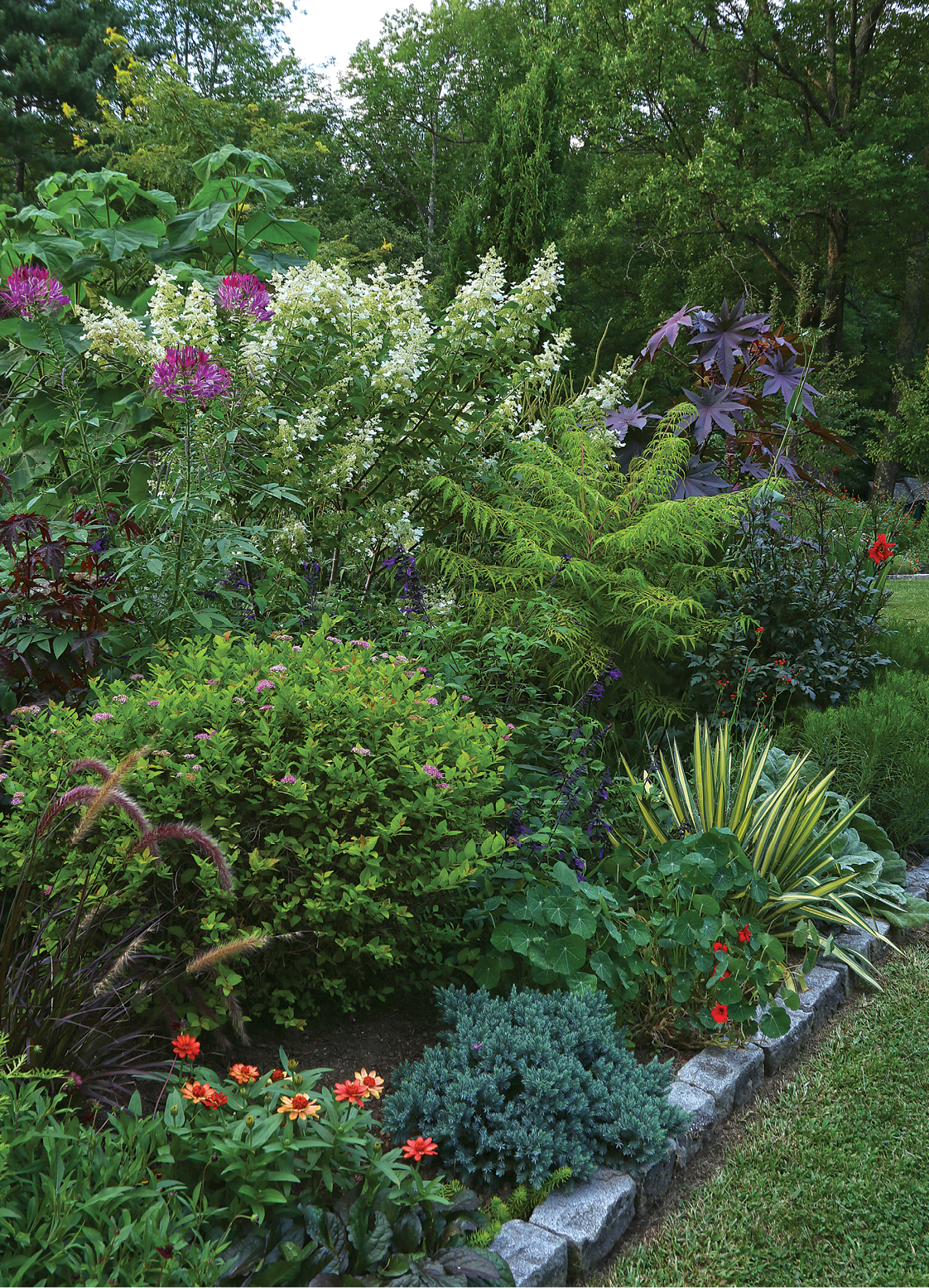
Annuals
1. ‘Profusion Apricot’ zinnia (Zinnia ‘Profusion Apricot’)
2. ‘Violet Queen’ spider flower (Cleome hassleriana ‘Violet Queen’)
3. Purple fountain grass (Pennisetum setaceum ‘Rubrum’, Zones 8–11)
Shrubs and perennials
4. ‘Blue Star’ juniper (Juniperus squamata ‘Blue Star’, Zones 4–8)
5. ‘Goldflame’ Japanese spirea (Spiraea japonica ‘Goldflame’, Zones 4–8)
6. ‘Tardiva’ panicle hydrangea (Hydrangea paniculata ‘Tardiva’, Zones 3–8)
7. Tiger Eyes® sumac (Rhus typhina ‘Bailtiger’, Zones 4–8)
Tips for getting the biggest bang from your annuals
It is worth paying more for bigger, more mature annuals, especially if your growing season is short. Here are a few tips.
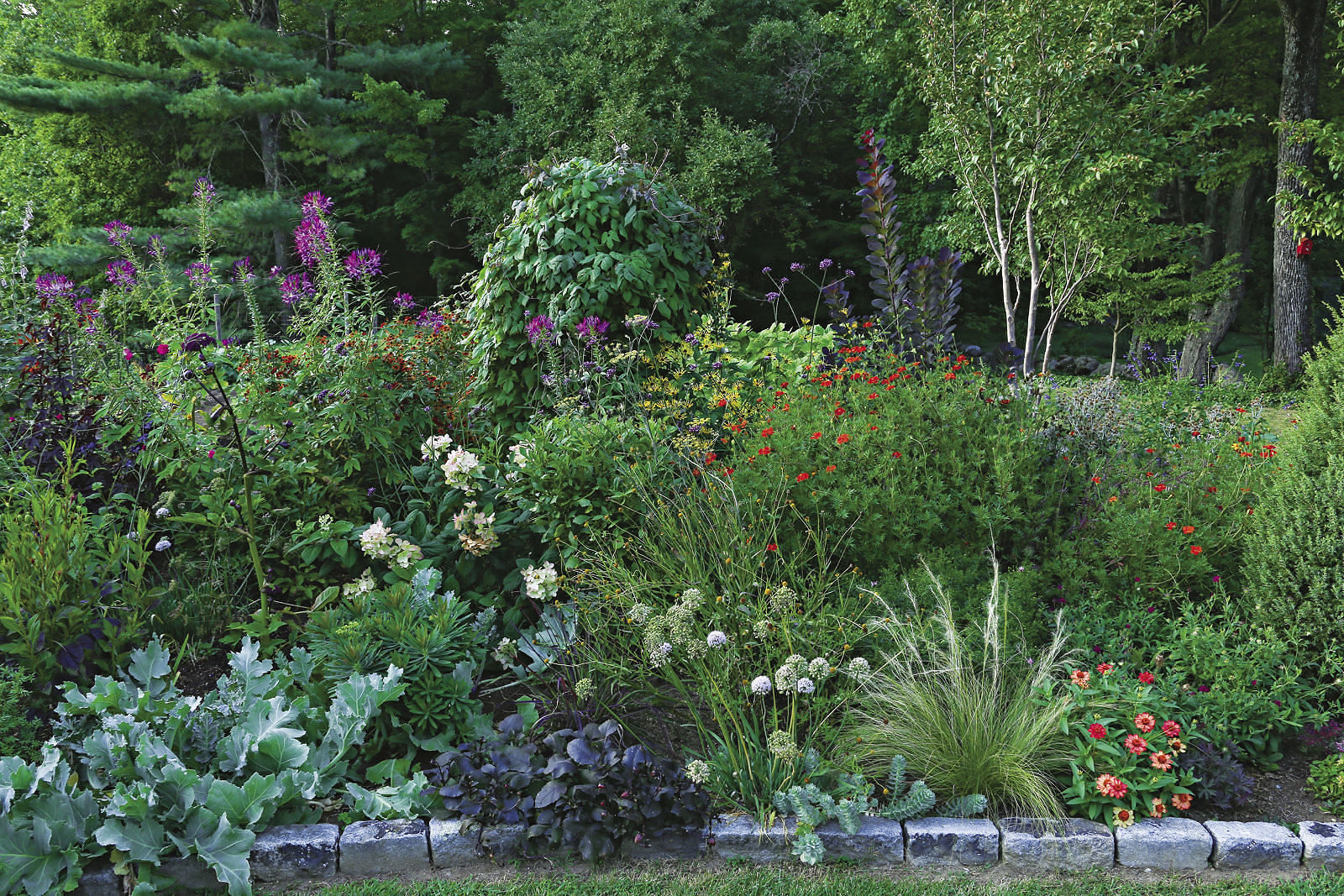
Add height
Annual vines on trellises are a nice vertical element, growing quickly to give a border height and weight. Don’t forget to stake dahlias and other tall annuals to keep them upright.
Take care
Be vigilant about watering, fertilizing, pinching, and deadheading. Mulch well to retain moisture.
Improvise
Don’t be afraid to move annuals to improve your design. As long as you keep them well watered, they should survive. I sometimes move perennials into a holding bed in midsummer to make space for more annuals.
Use your phone
Take photos of the garden with stakes in empty spaces, and review them while plant shopping. Google unfamiliar varieties to learn how to care for them and how they will look when full grown.
Repeat
Continue the theme by repeating some annuals elsewhere on the property, like patio planters or window boxes.
Overwinter wisely
In fall, bring particularly rare or expensive plants inside. Some can go dormant in a dark basement, while others will overwinter happily in a sunny room. When it’s time to bring them back outside, take the time to slowly acclimatize them to the sun.
Sunny room
• Princess flower (Tibouchina spp., Zones 10–11)
• Tropical smoke bush (Euphorbia cotinifolia, Zones 9–11)
• Lion’s ear (Leonotis leonurus, Zones 8–11)
• Yoke-leaved amicia (Amicia zygomeris, Zones 7–9)
• Elephant’s ear (Colocasia esculenta spp. and cvs., Zones 8–11)
Dark basement
• Dahlias (Dahlia cvs., Zones 8–10)
• Cannas (Canna cvs., Zones 8–10)
• Bananas (Musa spp. and cvs., Zones 10–12)
Laura Trowbridge is a garden designer in Peterborough, New Hampshire.
Photos by Carol Collins




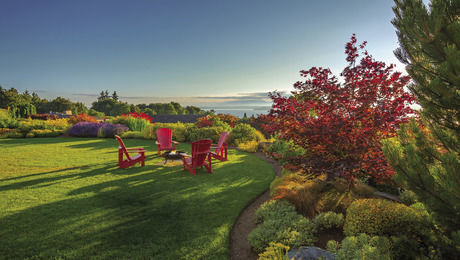














Comments
Log in or create an account to post a comment.
Sign up Log in